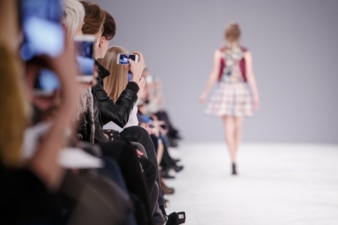09/12/2019 – Timeless beauty replaces short-term hype — auf Deutsch lesen
DMI’s trend outlook for the Autumn/Winter season 2020/21
It has been a long time since the fashion industry was swayed by one main trend. Instead, designers are having to rely on many smaller building blocks to create credible collections.
“When a brand goes ‘out of fashion’, it doesn’t mean it can’t recover. It’s more likely that it is temporarily out of touch with the current situation and market momentum,” explains Gerd Müller-Thomkins, CEO of the DMI, the German Institute for Fashion.
Trend researcher Carl Tillessen adds: “The companies currently making waves aren’t the ones that believe they can just produce hot clothes.” One of the biggest issues at the moment is sustainability. Tillessen also mentions other factors such as animal cruelty, which means designers have been shying away from angora, mulesing and real leather. “The most popular trend, of course, is to reject real fur,” explains Tillessen. “In the past, fashion brands could say: ‘If you don’t agree with our ethics, you don’t have to buy our clothes.’ These days, that’s no longer possible as it would trigger a wave of negative publicity on social media and would cost the brand huge amounts of money. One of the touchiest subjects in this regard is racism.”
Feminine and masculine
The ‘Me Too’ debate has not only changed our view of women, but also our perception of men. We need collections for women who do not have to rely on their sexuality to make progress in life. “Most men perceive this change in the role of sexes not as threatening, but as liberating.” Fashion has not just been put on the back foot for its outdated image of men and women in recent years. Another big issue has been sustainability. “A generation that wasn’t even on the radar has seized the topic and carried everyone else along with them.”
Calm and balance
DMI’s colour expert Niels Holger Wien gives us an insight into the new colourways. “The fashion industry is reacting to our society’s preference for multi-optionality. Its colour choices reflect our wish to be seen and express ourselves, whilst also demonstrating a growing demand for durability and timeless beauty.”
“Modest classics are spiced up with intense intermediate shades. Reduction is being taken to the extreme with sober grey and beige. Iridescent effects defamiliarise cosmic pastels and mystic darks. Purple shades reflect the avant-garde. We’re watching nature in motion. Contrasts are being enhanced and showing sensitivity is becoming a fashion statement. Calm and balanced colours and materials feel like a provocation. Soft colours, beige in layered shades, neutralised pastels and browns in dark foundations dominate the new colour base.”




